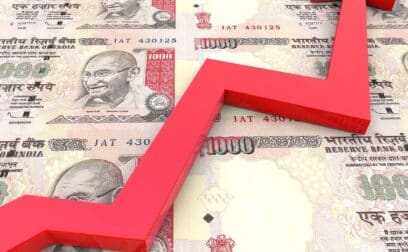Defintion
Operating margin is a financial metric that measures the profitability of a company’s core operations.
What is operating margin?
Operating margin represents the percentage of revenue that remains after deducting the direct costs. In essence, it shows how much profit a company generates from its primary business activities.
Operating margin is calculated using the following formula:
Operating margin = (operating income / revenue) x 100
A higher operating margin indicates that a company is better at managing its costs and generating profit from its core operations. Conversely, a lower margin may indicate inefficiencies or a highly competitive industry.
Check out our handy operating margin calculator to make the calculation easier.
It is a key metric for comparing the financial performance of different companies within the same industry, as it provides insights into how efficiently companies manage their costs. Investors often analyse operating margin to assess a company’s ability to generate profit from its core operations. A consistent and healthy operating margin can be a positive sign for potential investors.
Limitations of the operating margin
The operating margin has several limitations. It does not account for non-operating income and expenses, such as interest and taxes, which can significantly impact overall profitability. Additionally, the operating margin may vary widely across different industries, making cross-industry comparisons less meaningful.
It also does not consider the effects of capital structure, as it excludes interest expenses, therefore not reflecting financial leverage. Furthermore, changes in accounting policies or practices can affect the operating margin, potentially reducing its comparability over time. Lastly, the operating margin may be influenced by one-time or non-recurring items, which can distort the true operating performance of the company.
Factors affecting operating margin
- Pricing strategy: The prices at which a company sells its products or services can significantly impact operating margin.
- Cost of goods sold (COGS): Managing the cost of producing or acquiring goods and services is crucial for profitability.
- Operating expenses: Efficient management of these costs can lead to higher operating margins.
- Economies of scale: Larger companies often have the potential to achieve economies of scale, which can positively impact operating margin.
- Industry and market conditions: Different industries have varying average operating margins.
Example of operating margin
Let’s say Company XYZ has generated £1,000,000 in revenue from its business operations. After deducting all operating expenses, the company has an operating income of £300,000.
Now we can calculate the operating margin for Company XYZ:
Operating margin = (£300,000 / £1,000,000) x 100% = 30%
Therefore, Company XYZ’s operating margin is 30%. This means that for every pound of revenue generated, the company retains 30 pence as operating profit after covering all operating expenses.
































 yet? Register here!
yet? Register here!